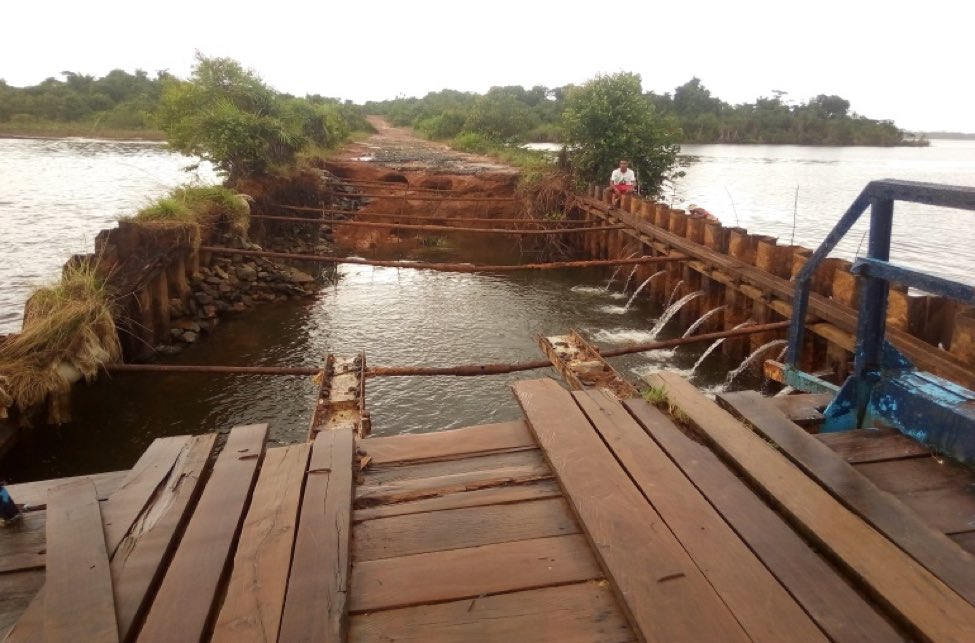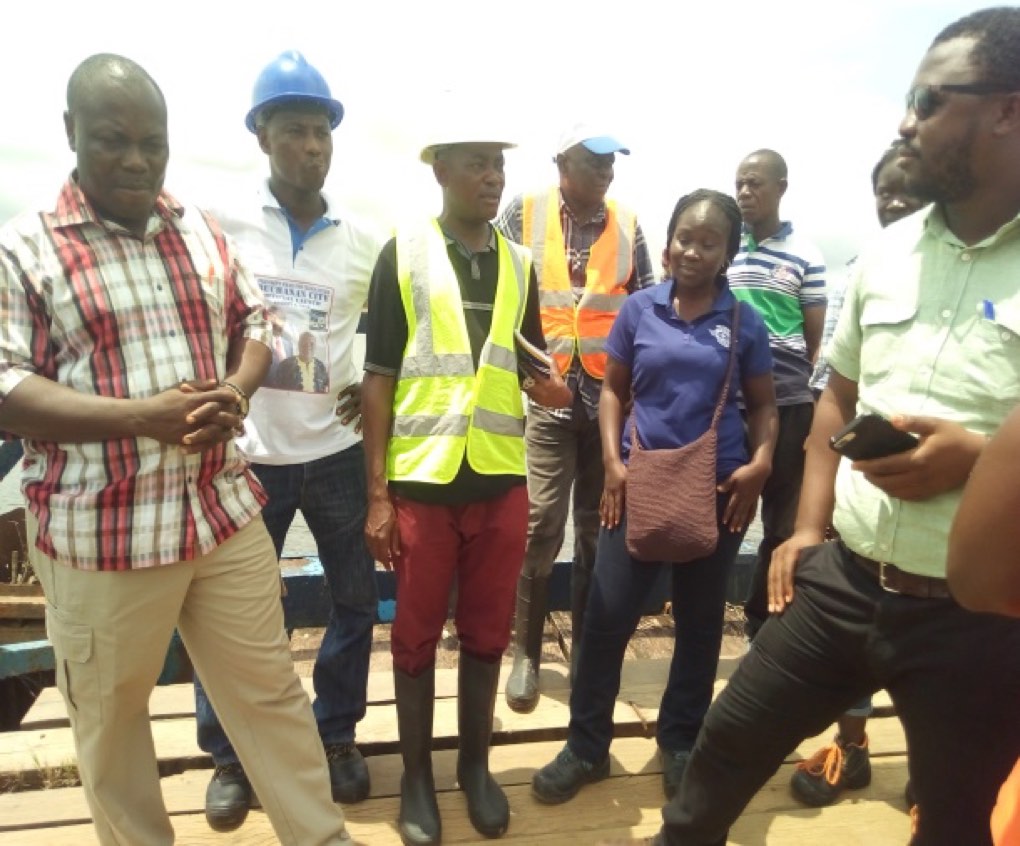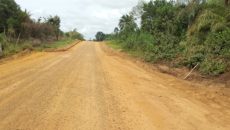BUCHANAN, Grand Bassa – A team of engineers sent by USAID have concluded a trip to Grand Bassa to assess the damage to the bridge that leads to the Grand Bassa Community College campus.
Heavy rains in July had caused the collapse of the bridge, forcing the college to relocate its activities to the Bassa High School Campus on Tubman Street in Buchanan. The college had recently announced the herculean task of raising US$1.5 million to rebuild the bridge.
The USAID assessment was requested by Grand Bassa’s Sen. Jonathan Kaipay, who had briefed John Gorlorwulu, USAID’s economic growth office director, about the constraints the collapsed bridge posed to the school.
The assessment team included engineers from the Ministry of Public Works and the work was done last Wednesday, August 22. The team of engineers also examined the potential of using a back road to get to the college.
The engineers have tentatively estimated the cost of reconstructing the 510-feet bridge to be between US$1.5-2 million. The alternative route of using the backroad would require a 7 km road to be constructed, along with mini bridges and culverts along three streams.
Speaking to journalists during the assessment, Sen. Kaipay said he is lobbying with partners to resolve the situation. Kaipay said he plans to meet with the American ambassador and other international partners to highlight the challenges faced by the college.
“My anticipation is to see how we can construct a modern bridge on the Benson River that connects the Grand Bassa Community College,†he said. “Also, while we are doing that as a medium term [plan], a short-term [goal] is how we can get this back road done as an alternative route, because to construct such a huge bridge will take some time.â€
Kaipay said the county would have to use its own funds to ensure that a temporary solution existed: “If we are given the green light about this route, we can rally resources from both the county’s coffers and our own pockets to see how we can find additional buses that will help mitigate this situation while we are preparing and looking for the resources to construct the main bridge.â€
Grand Bassa’s assistant superintendent for development, Flee Glay, thanked the senator for involving international partners in the effort to rebuild the bridge. He agreed with Kaipay’s suggestion of preparing the back road as an alternative for students to have access to the campus at the beginning of the upcoming academic year.
The Dwen town chief, whose town lies along the back road, was hopeful that the rehabilitation of the road would assist his people. Stephen Sorwon said traders often experienced difficulties bringing goods to the market due to the poor state of the road. Residents of Dwen town and surrounding communities mainly survive on producing and trading edible clay.
“When they fix this road, we will be too happy because all the other towns behind us don’t get car road at all, so they can tote their goods on their heads to Dwen town before they get on car,†he said.

The collapsed bridge. Photo: Sampson David
The assessment by the USAID team is the second, after the college had invited an engineer to evaluate its options: reconditioning the back road linking the Buchanan-Monrovia highway to the college at the cost of US$300,000, purchasing a US$15,000 ferry to regularly transport students and staff, or rebuilding the collapsed bridge for US$1.5 million.
USAID has a Feeder Roads Alternative and Maintenance Program that is currently rehabilitating two feeder roads in Grand Bassa. They include a 35-km road from Compound One to Edina that is worth US$1.5 million and a 7.25-km road from Waka Town to Johnny Tutu Town, worth US$570,000.
Featured photo by Sampson David



